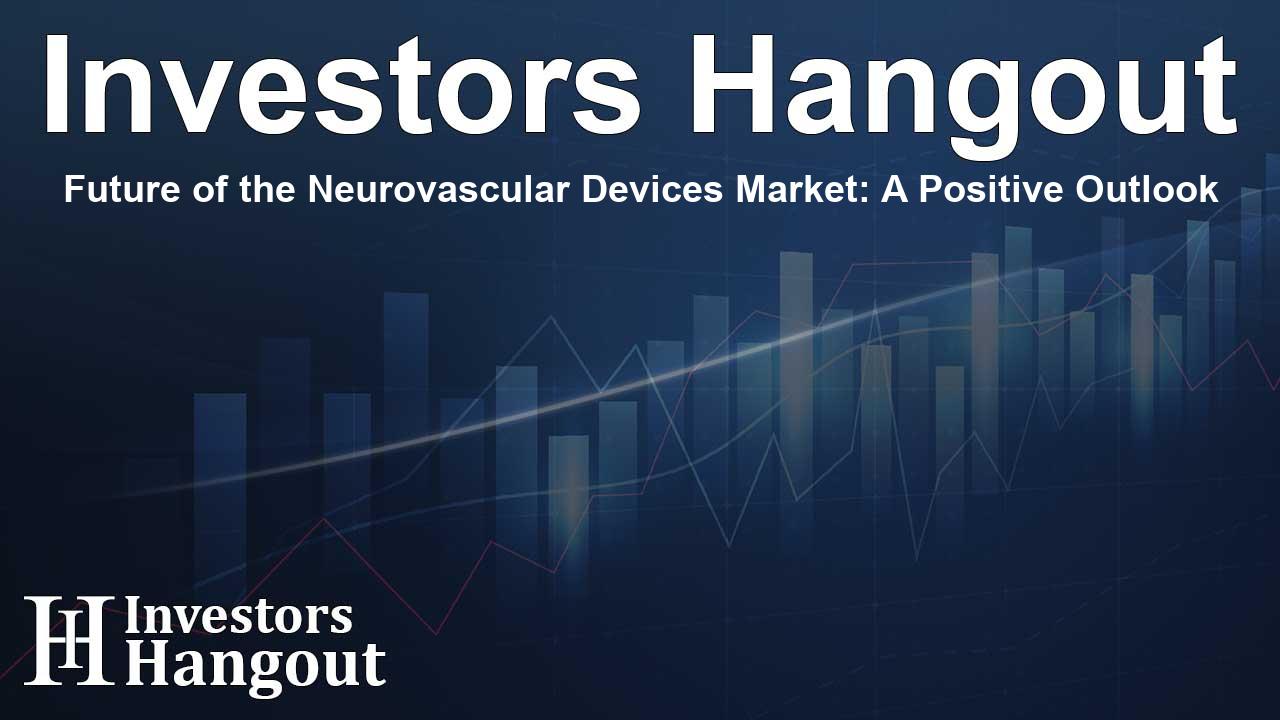Future of the Neurovascular Devices Market: A Positive Outlook

Understanding the Neurovascular Devices Market
The global Neurovascular Devices Market is gaining momentum, anticipating a rise in revenue to USD 8.6 billion by 2033, with a significant compound annual growth rate (CAGR) of 9.0%. As medical advancements continue to unfold, this sector remains vital in addressing conditions that impact the blood vessels within the brain and nervous system.
What Are Neurovascular Devices?
Neurovascular devices are specialized medical instruments designed to handle various conditions affecting brain blood vessels. These devices range from stents and coils to advanced catheters and flow diverters. They play a crucial role in treating issues such as ischemic strokes, aneurysms, and arteriovenous malformations, ultimately helping to restore normal blood flow, prevent hemorrhages, and reduce brain damage risks.
Market Growth and Trends
As per current projections, the neurovascular devices marketplace is poised to reach a value of approximately USD 3.9 billion by the end of 2024, further growing to USD 8.6 billion by 2033. Notably, the United States Neurovascular Devices Market is expected to contribute significantly, with estimates suggesting it will hit USD 1.1 billion by 2024, growing at a CAGR of 8.5%.
Key Factors Driving Market Demand
Several factors bolster this market's growth, notably a rising prevalence of neurological conditions among the aging population. The incidence of strokes and aneurysms is escalating, coupled with an increasing preference for minimally invasive procedures that enhance recovery times and lower complications. Furthermore, the demand for advanced imaging technologies and enhanced materials is revolutionizing the neurovascular treatment landscape, further supporting market expansion.
Competitive Landscape
The market landscape is competitive, characterized by numerous key players engaging in innovative device development and strategic advancements. Major contributors include renowned organizations such as Medtronic, Stryker Corporation, and Johnson & Johnson, all dedicated to enhancing their product offerings and capturing more market share.
Market Segmentation
The neurovascular devices market can be segmented broadly by devices, therapeutic applications, size, and end users. Among various types, cerebral embolization and aneurysm coiling devices currently dominate, likely holding a significant revenue share. Furthermore, by therapeutic application, stroke management appears to be a critical area, projected to control a notable market percentage.
Observing Market Dynamics
Innovative developments in neurovascular treatments are not just confined to device creation. Emerging technologies and the discovery of newer, more effective treatment methods play a substantial role in reshaping the market. As healthcare providers increasingly adopt these advancements, the demand for sophisticated neurovascular solutions rises, heralding a bright future for this sector.
Regional Insights
Geographically, North America is set to lead the market with an anticipated revenue share of 33.5% in 2024, benefiting from high incidences of neurological disorders, better healthcare service accessibility, and robust reimbursement policies. Europe and Asia-Pacific are also expected to demonstrate solid growth, backed by increasing investment in healthcare technologies.
Opportunities and Challenges
While opportunities abound in this flourishing sector, challenges persist. Integrating new devices into existing healthcare infrastructure may pose difficulties, particularly concerning compatibility with older systems. Additionally, the high costs associated with innovative neurovascular devices may limit access in lower-income regions, challenging overall market growth.
Looking Ahead: Strategic Insights
Moving forward, the neurovascular device market is expected to benefit from increased regulatory approvals that will endorse product innovations and subsequently drive further investment in research and development. This creates avenues for expanding service capabilities and enhancing patient care quality.
Frequently Asked Questions
What is the projected growth of the Neurovascular Devices Market?
The Neurovascular Devices Market is expected to reach USD 8.6 billion by 2033, growing at a CAGR of 9.0% from current projections.
What roles do Neurovascular Devices play in patient care?
These devices aid in treating conditions impacting neurological health, including ischemic strokes and aneurysms, thus ensuring a restoration of normal blood flow.
Who are the major players in the Neurovascular Devices Market?
Key participants include Medtronic, Stryker Corporation, Johnson & Johnson, and others, focusing on innovation and strategic growth initiatives.
What factors are driving market growth?
An aging population, increasing prevalence of neurological conditions, and a shift towards minimally invasive procedures are primary drivers.
What challenges does the market face?
Challenges include integrating new devices within existing infrastructure and addressing high costs that can limit accessibility to advanced technologies.
About Investors Hangout
Investors Hangout is a leading online stock forum for financial discussion and learning, offering a wide range of free tools and resources. It draws in traders of all levels, who exchange market knowledge, investigate trading tactics, and keep an eye on industry developments in real time. Featuring financial articles, stock message boards, quotes, charts, company profiles, and live news updates. Through cooperative learning and a wealth of informational resources, it helps users from novices creating their first portfolios to experts honing their techniques. Join Investors Hangout today: https://investorshangout.com/
Disclaimer: The content of this article is solely for general informational purposes only; it does not represent legal, financial, or investment advice. Investors Hangout does not offer financial advice; the author is not a licensed financial advisor. Consult a qualified advisor before making any financial or investment decisions based on this article. The author's interpretation of publicly available data shapes the opinions presented here; as a result, they should not be taken as advice to purchase, sell, or hold any securities mentioned or any other investments. The author does not guarantee the accuracy, completeness, or timeliness of any material, providing it "as is." Information and market conditions may change; past performance is not indicative of future outcomes. If any of the material offered here is inaccurate, please contact us for corrections.